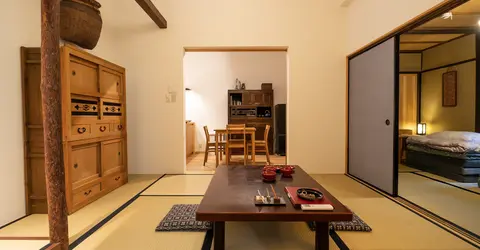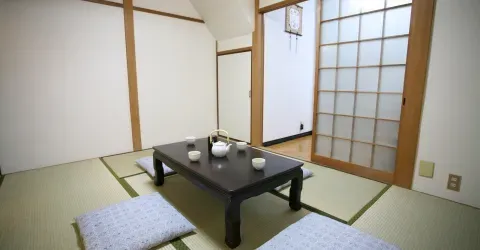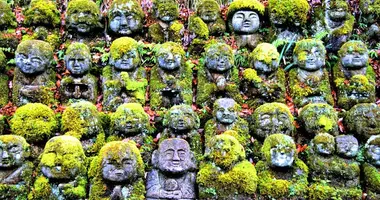Hongan-ji temples 西本願寺
Hongan-ji temples
In Kyoto, the Nishi Hongan-Ji and Higashi Hongan-Ji temples represent the Jodo branch of Buddhism. Both built in the 16th century, they form a pair and are located a hundred meters from each other.
Nishi Honganji Temple
The "Temple of the Original Western Vow" is the smaller of the two but also the more intimate. It is also listed as a UNESCO World Heritage Site , unlike its bigger brother to the east. Little known to tourists, it is also free and was founded during the Kamakura era (1185-1333). It represents the Jôdo-Shinshû Buddhist school , which is very popular in Japan today, created by the monk Shinran. The temple was first built in Osaka, then moved and rebuilt in Kyoto in 1591 .
Surviving a fire in 1617, the Goei-do is the main building dedicated to the founder, which was completed in 1636. Its dimensions, 62 meters long by 48 meters wide, make it one of the largest sacred buildings in the city. . The complex also includes traditional reception rooms, with tatami mats and sliding doors, as well as beautiful lanterns and carved wooden ceilings .
Read also : Buddhism in Japan

Nishi Honganji Temple
Wikimedia Commons
The temple bell is housed in a small tower ( shoro ). Do not miss the splendid painted Chinese door , the Karamon , dating from the 16th century. The latter is decorated according to the codes of the Momoyama period (1573-1603), and was transferred from Fushimi Castle in 1618 .
The visit is completed by the charming Floating Clouds Pavilion , to the south-west, but also by the presence of a centuries- old ginko within the enclosure, whose foliage takes on golden shades in autumn.
Higashi Honganji Temple
Higashi Hongan-Ji Temple is located east of Nishi Hongan-Ji on Karasuma-dori Avenue. Like his alter ego, he belongs to the Jodo sect of Buddhism. It is nevertheless more recent than him, since it was built in 1602 , the date on which the shogun Tokugawa Ieyasu split the sect into two entities. However, it suffered numerous fires , first in 1617 and then in 1864 and 1895. This is why the structures mainly date from the beginning of the 20th century. The whole impresses with the size of the places and the buildings , as well as with the meticulous work of the ornaments of the wood.

Higashi Honganji Temple
Wikimedia Commons
The main building is unique: it has the largest wooden roof in the world . With its impressive dimensions - 76 meters long by 58 wide and 38 high - the structure seems endless, and it is also one of the largest temples in Kyoto . It houses a large tatami room that welcomes visitors and devotees.
The visitor is also welcomed by a large door typical of Japanese architecture, called Goeidô-mon , also in carved wood, decorated with gilding .
To complete the visit, you will find a few hundred meters from the Higashi Hongan-Ji the garden which is attached to it, the Shosei-en . Unknown but charming, it offers a stroll along the tea houses, around a large pond, for an entrance fee of 500 yen (3.50 euros).
To read : Japanese parks and gardens
The visit to the two complexes is refreshing, away from the hustle and bustle of the more touristy temples of the city such as the Golden Pavilion or the Kiyomizu-dera .
Address, timetable & access
Address
Phone
+81 (0)75 371 5181Timetable
About 10 minutes walk from Kyoto Station Nishi Hongan-Ji Temple: Bus Lines 9, 28 or 75, "Nishi Hongwanji-mae" stopHigashi Hongan-Ji Temple: Bus Lines 5, 205, 206, 208, "Karasuma" stop Nanajo »Price
Free accessAccess
Open every day of the year. From January to February and from November and December open from 6 a.m. to 5 p.m. From March to April and from September to October, from 5.30 a.m. to 5.30 p.m. From May to August, from 5.30 a.m. to 6 p.m.Website
http://www.hongwanji.or.jp/english/



































